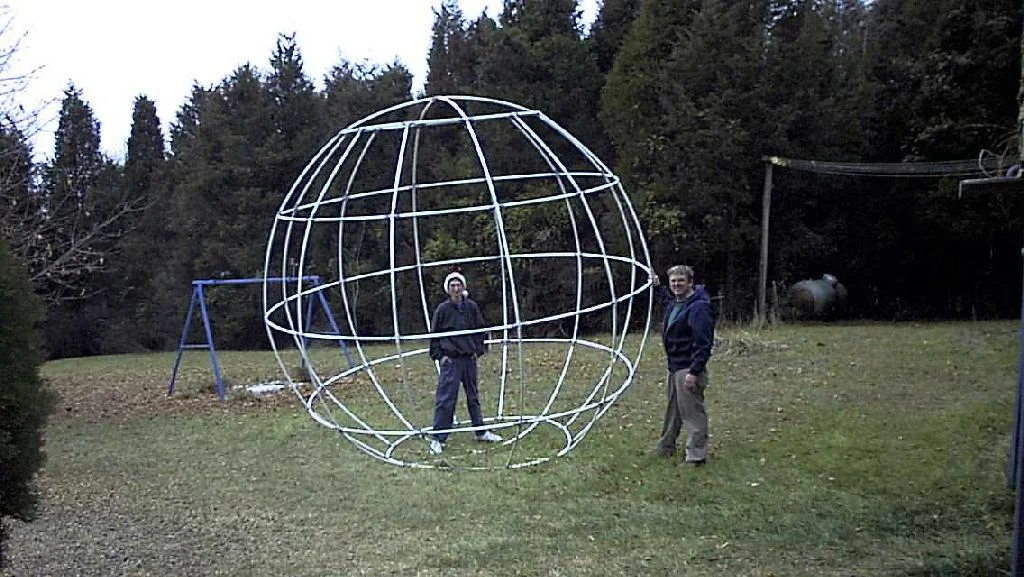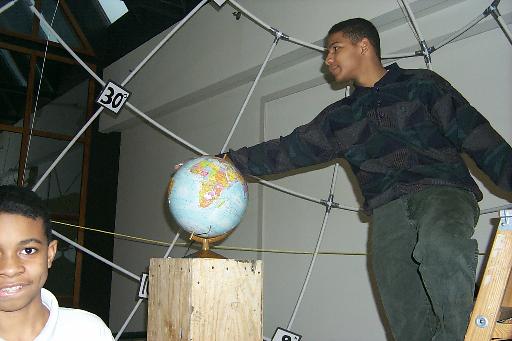
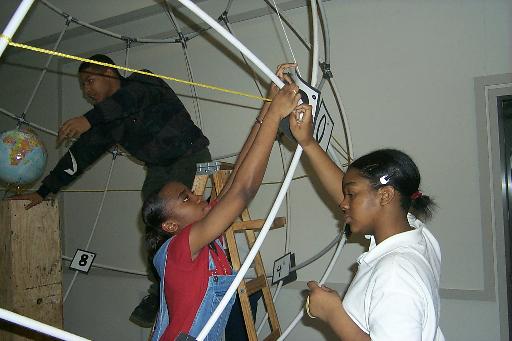
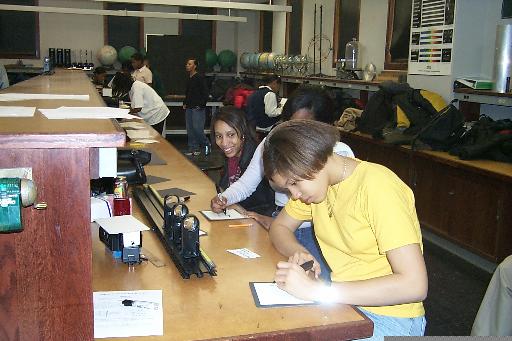
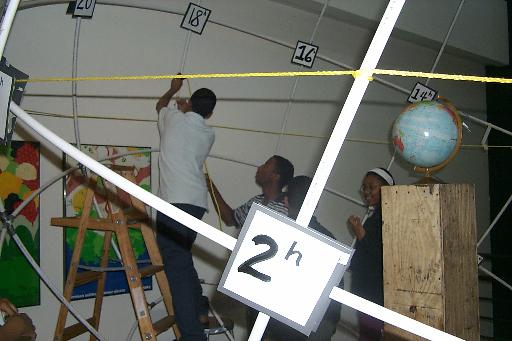
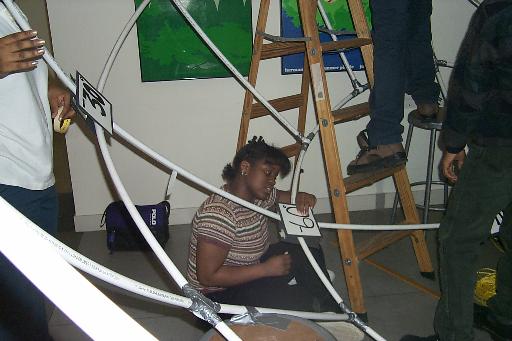
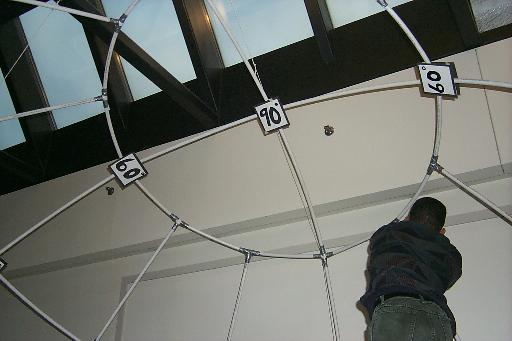
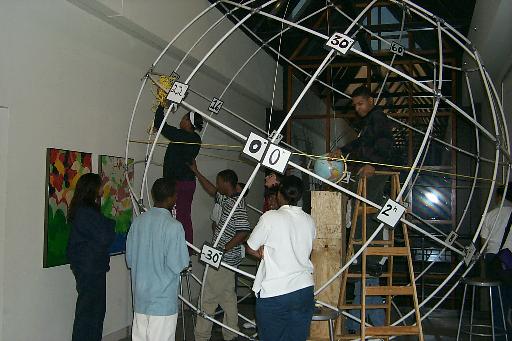
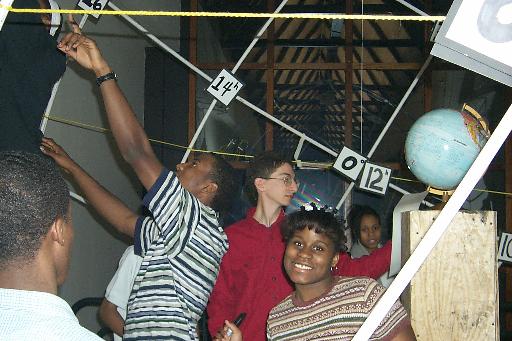
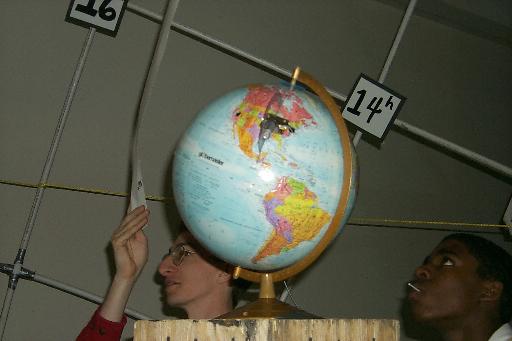
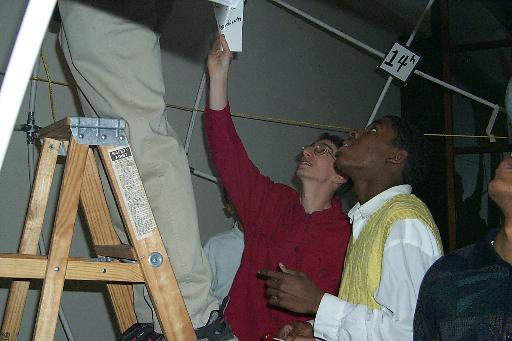

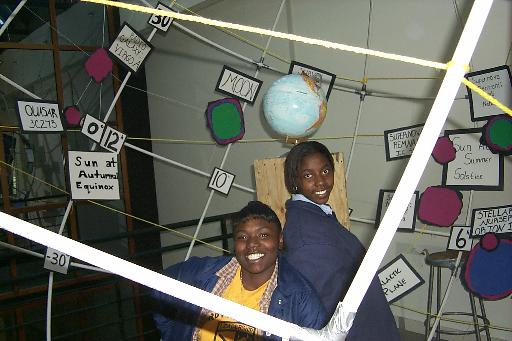
Celestial Sphere Lab
In 1999, the Center for Astrophysical Research in Antarctica asked me to teach a semester-long course on astronomy to the Space Explorers, a group of minority junior and senior high school students from the south Chicago area. As an organizing theme, I designed and built a 12-foot model of the celestial sphere from PVC pipe and connectors. After assembling the sphere, my students placed at its center a modified globe: It has a laser pointer attached to Chicago that moves in the ALT/AZ coordinate system of the University of Chicago's 4.5-m educational radio telescope. By climbing into the sphere and using the globe and the laser pointer, students gained an intuitive understanding not only of how the celestial sphere works, but also of how the ALT/AZ coordinate system of the 4.5-m telescope is related to the RA/DEC coordinate system of the celestial sphere. Then, using the sphere, the globe, the laser pointer, and the 4.5-m telescope, my students planned and participated in a 24-hour observing run, from which they produced a radio map of the northern sky. This map includes supernova remnants, stellar nurseries, radio galaxies, and quasars.
Here is an article about the course that appeared in the University of Chicago Chronicle.








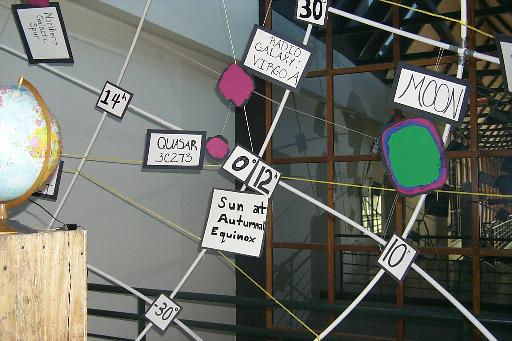


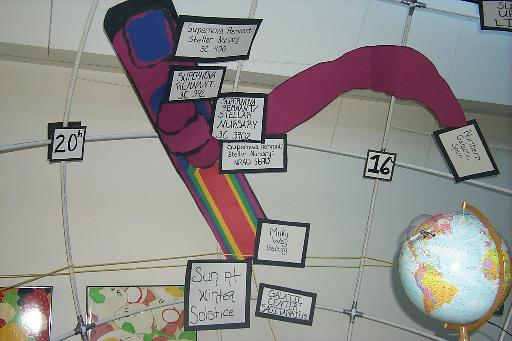
documentation that appeared with the sphere
What is this thing?
This is a 12-foot diameter model of the celestial sphere.
If you have ever gone stargazing, you might have noticed that the stars appear to drift slowly across the sky, from east to west. In fact, the stars appear to rotate, en masse, about a fixed point in the sky, near the star Polaris. Ancient astronomers envisioned that the stars were all attached to an invisible sphere — called the "celestial sphere" — that encircles us. This sphere was believed to rotate approximately once every day, creating the apparent motion of the stars across the sky.
Today, we know that the stars are not attached to an invisible sphere that encircles us, but rather, the stars are distributed throughout the Galaxy, each at a different distance from us. If there is no celestial sphere, then what makes the stars appear to rotate about us? The answer is simple: it is the earth that is rotating on its axis once every day. Since we observe the sky from the surface of a rotating object, it is the sky that appears to rotate overhead.
However, the concept of the celestial sphere remains an extremely useful one today. Just as any location on the surface of earth can be specified by a longitude and a latitude, the location of any star — or any other celestial object for that matter — can be specified by a "right ascension" and a "declination". Here, right ascension corresponds to longitude, but right ascension is measured in hours, instead of degrees. Analogously, declination corresponds to latitude, but in this case, declination is measured in degrees. The right ascension and declination coordinate system has been labeled on this sphere.
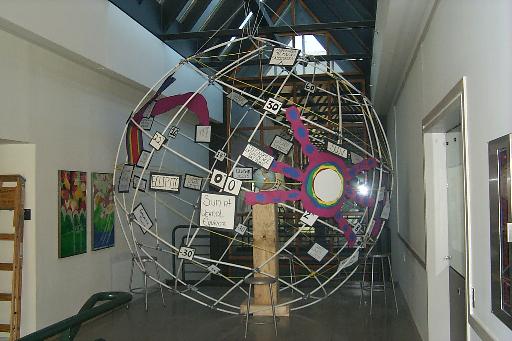
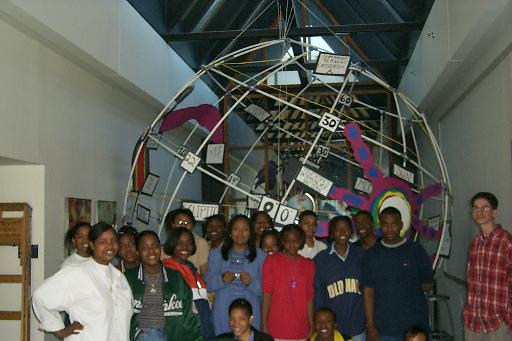
Hence, the celestial sphere is an extremely useful tool if one plans to observe the sky — which is exactly why we have built a working model of it!
On the top of this building, you may have noticed a satellite dish with a red lightning bolt painted on it. If not, walk down the hall to your right and look out of the windows. Although originally designed to track satellites, we have modified this instrument to detect radio waves from space. In other words, it is a telescope — just like the optical telescopes that you may be more familiar with — except that this telescope "sees" light that our eyes cannot. This telescope sees the invisible universe.
Beginning at 8 a.m. on Saturday, April 24th, the Space Explorers, students taking PhySci 120, and members of the Ryerson Astronomical Society will team up to make a map of the invisible universe with this telescope. Since radio astronomy can be done during the day, and since radio waves easily penetrate cloud cover, daylight and bad weather will not be deterrents. The telescope will be in constant motion for 24 hours, during which time data will be constantly saved to a computer.
In the weeks that follow, these students will use the data that they have collected, and computers, to make a map of the invisible universe. We will post a copy of the map here. In addition, all detected celestial objects will be appropriately marked on the sphere. What you will see may look strange and unusual: the radio sky is very different from the sky that we can see with our eyes. For example, no stars (other than the sun) will be seen! However, supernovae remnants, stellar nurseries, other galaxies, and possibly even a few quasars might be detected.
To prepare for this endeavor, the students have been making use of a modified globe that we have placed at the center of the sphere. Attached to Chicago on this globe, you should see a laser pointer. This laser pointer can be moved up and down, just as the students will be moving the radio telescope on April 24th. Using the attached protractor, and knowledge of how the earth rotates, these students have determined what part of the celestial sphere that they will be probing at any time during the upcoming observation.
